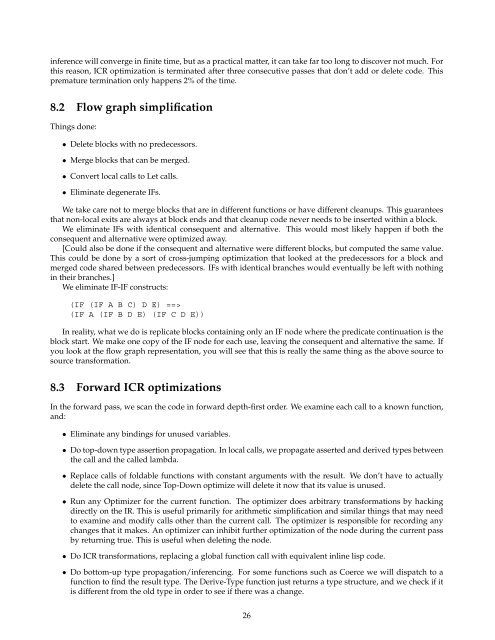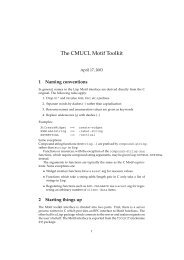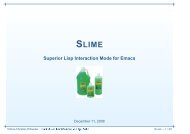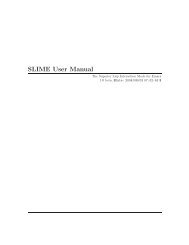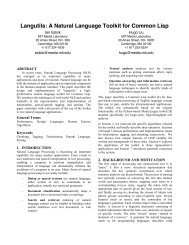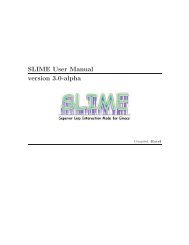Design of CMU Common Lisp.pdf - Common Lisp.net
Design of CMU Common Lisp.pdf - Common Lisp.net
Design of CMU Common Lisp.pdf - Common Lisp.net
You also want an ePaper? Increase the reach of your titles
YUMPU automatically turns print PDFs into web optimized ePapers that Google loves.
inference will converge in finite time, but as a practical matter, it can take far too long to discover not much. For<br />
this reason, ICR optimization is terminated after three consecutive passes that don’t add or delete code. This<br />
premature termination only happens 2% <strong>of</strong> the time.<br />
8.2 Flow graph simplification<br />
Things done:<br />
• Delete blocks with no predecessors.<br />
• Merge blocks that can be merged.<br />
• Convert local calls to Let calls.<br />
• Eliminate degenerate IFs.<br />
We take care not to merge blocks that are in different functions or have different cleanups. This guarantees<br />
that non-local exits are always at block ends and that cleanup code never needs to be inserted within a block.<br />
We eliminate IFs with identical consequent and alternative. This would most likely happen if both the<br />
consequent and alternative were optimized away.<br />
[Could also be done if the consequent and alternative were different blocks, but computed the same value.<br />
This could be done by a sort <strong>of</strong> cross-jumping optimization that looked at the predecessors for a block and<br />
merged code shared between predecessors. IFs with identical branches would eventually be left with nothing<br />
in their branches.]<br />
We eliminate IF-IF constructs:<br />
(IF (IF A B C) D E) ==><br />
(IF A (IF B D E) (IF C D E))<br />
In reality, what we do is replicate blocks containing only an IF node where the predicate continuation is the<br />
block start. We make one copy <strong>of</strong> the IF node for each use, leaving the consequent and alternative the same. If<br />
you look at the flow graph representation, you will see that this is really the same thing as the above source to<br />
source transformation.<br />
8.3 Forward ICR optimizations<br />
In the forward pass, we scan the code in forward depth-first order. We examine each call to a known function,<br />
and:<br />
• Eliminate any bindings for unused variables.<br />
• Do top-down type assertion propagation. In local calls, we propagate asserted and derived types between<br />
the call and the called lambda.<br />
• Replace calls <strong>of</strong> foldable functions with constant arguments with the result. We don’t have to actually<br />
delete the call node, since Top-Down optimize will delete it now that its value is unused.<br />
• Run any Optimizer for the current function. The optimizer does arbitrary transformations by hacking<br />
directly on the IR. This is useful primarily for arithmetic simplification and similar things that may need<br />
to examine and modify calls other than the current call. The optimizer is responsible for recording any<br />
changes that it makes. An optimizer can inhibit further optimization <strong>of</strong> the node during the current pass<br />
by returning true. This is useful when deleting the node.<br />
• Do ICR transformations, replacing a global function call with equivalent inline lisp code.<br />
• Do bottom-up type propagation/inferencing. For some functions such as Coerce we will dispatch to a<br />
function to find the result type. The Derive-Type function just returns a type structure, and we check if it<br />
is different from the old type in order to see if there was a change.<br />
26


